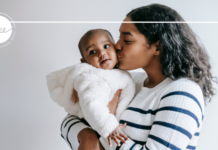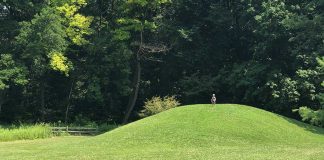
Emily’s reflection on impact and belonging
Black History Month hits differently when your dad is only 11 years younger than Dr. Martin Luther King, Jr.
When your grandfather was deemed black by the one-drop rule. When your dad grew up in the days of Jim Crow and went to college in a sundown town. When your parents were legally married 10 years after the Loving decision. My father may not be as well known as Dr. Martin Luther King Jr, but my dad has been a civil rights activist his whole life. My lens of what most people see as Black History is Black Present.
My beautiful Black son is my family’s second generation since the civil rights movement. For context, 11 generations of Blacks were slaves. I spend a lot of time and energy throughout the year looking for the stories that flood libraries, classrooms, and our timelines for the month of February. I’m raising my son to understand the past battles to prepare him for a brighter future.
Simultaneously, as a bi-racial adopted woman, I’ve spent my entire existence looking for where I fit in. The family history both is and isn’t mine. I’ve been ‘too white’ for this or ‘too Black’ for that. I’ve been asked the question, “I know you’re Black, but what else are you?” I’ve faced the microaggression of, “You’re not like those Black people.” I’ve learned to navigate these better each time it happens. I belong where I decide I belong. I am enough just as I am.

Courtney’s reflection on intentionality and reclamation
My adoptive parents surrounded me with black art and media growing up. I saw my race in small yet significant places in our home, like a black Santa and Cinderella mural. Since I couldn’t see myself racially in my white parents, I had to look elsewhere, and therefore they had to be incredibly intentional to ensure our environment represented me.
Over the years, I’ve learned that racial diversity requires a lot of intentionality. Without purposeful plans to live a racially diverse life, we won’t. Our neighborhoods, churches, schools, and more exist within a societal/geographic framework built upon segregation. Therefore, it will take quite the dedicated effort to see our surroundings mimic the diversity even my example of an existence holds: both black and white, together.
I remember learning about Black History Month in school. It felt like something I didn’t identify much with due to longing to assimilate into the white norms around me. I’ve since learned that I largely didn’t identify with my race, like the first quadrant in the graph below shows, in fear of being increasingly different when all I wanted was to feel “like everyone else.”

On the flip side, I remember being incredibly swept up in the stories of particular black women. The strongest of my memory was that of Sojourner Truth. I remember clutching the book pages tightly as I read of the horrors she endured and the bravery with which she lived out her surviving and freedom.
I think it was the living I was overcome by. Stories of so many black men and women who died due to abuses by white people had grown weary for me to read. Where were all the writings about and by those who lived through these atrocities? Those who shaped our world into a more inclusive one? These stories were minimally available to me but maximally existent. There were far more influential black people than the few I’d heard about, and almost none were included in our assigned readings or textbooks. The fabric of our learning was based on, published by, and distributed by white people – meaning there was little intentionality to ensure that our learnings included sufficient diversity.
Identifying with my blackness, 20+ years later, it’s a learning curve for me to steward this part of my and my children’s heritage. In some ways, I’m building on what I was given, and in many ways, I’m forging our own journey of living in a diverse home. This Black History Month will only be my second since having kids. Last year, my oldest (only one at the time – but who says that’s too early?!) and I read a book about Ruby Bridges that she referenced as “BUU” for “BUS!”.
Without black parents to tell me what their parents taught them about their background, the library has been our place to start. I’m thankful that all of these years later, I finally have people in my life who look like me to ask, too. Black history hasn’t always felt like my history, but it does now.










Thank you for sharing such personal experiences with all of us!